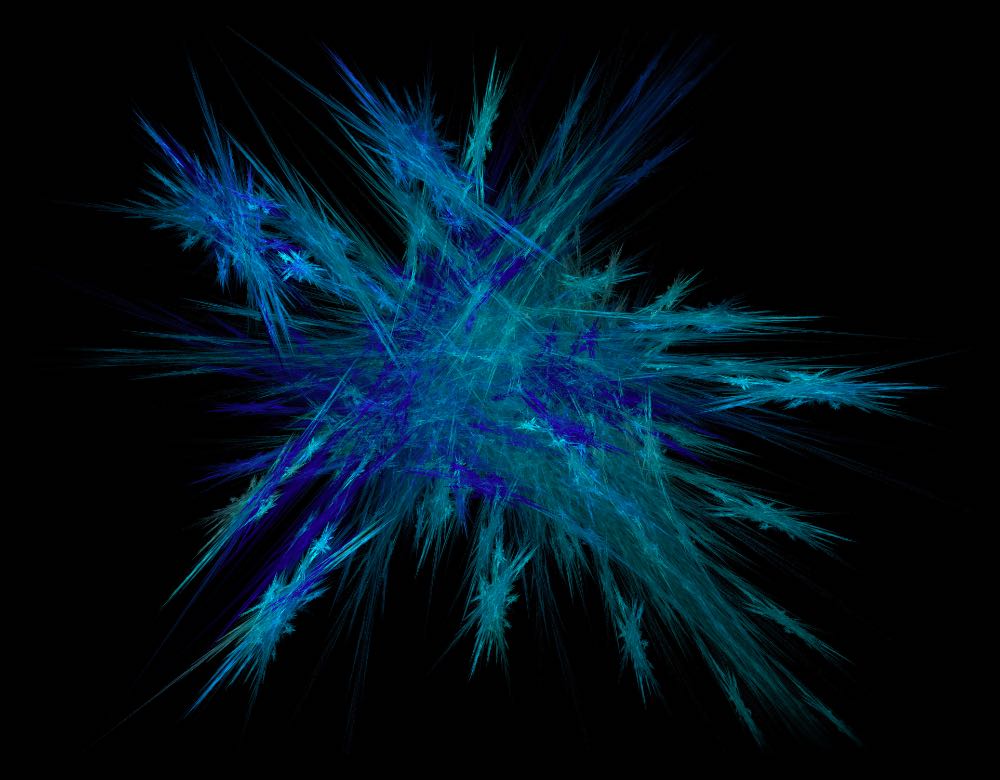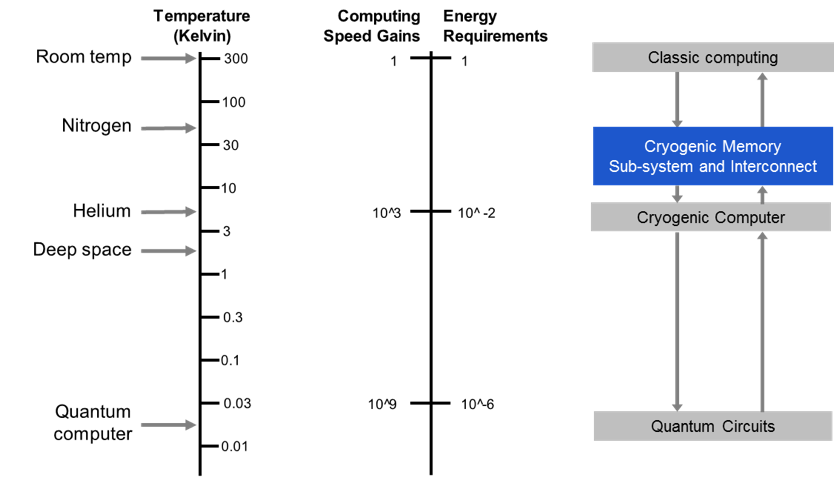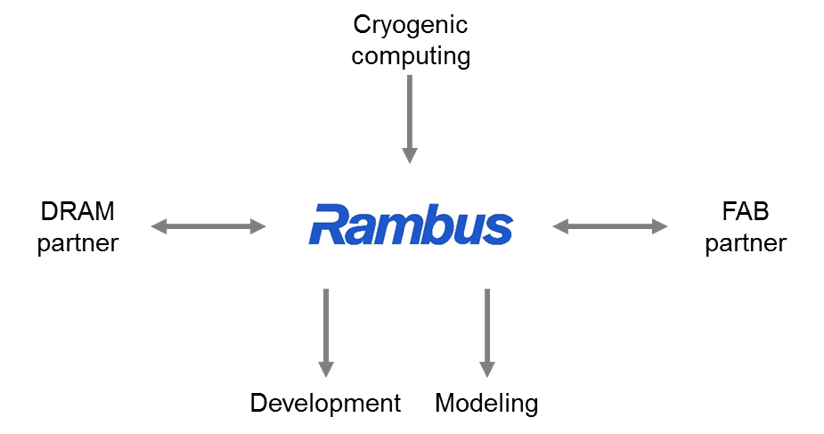Rambus and Microsoft are currently researching various opportunities to optimize memory and interface solutions for operation at cryogenic temperatures for future generation data centers.
As per Moore’s Law, memory systems have achieved exponential improvements in energy efficiency, density and per-bit cost for decades. These gains have facilitated the rapid growth in centralized computing – commonly referred to as cloud computing. In recent years, the scaling of such metrics through conventional techniques has slowed. Concurrently, the demand for larger, faster data systems have increased due to the proliferation of Big Data applications such as data analytics and machine learning.

These developments have prompted the industry to seek step function changes in performance and cryogenic computing and/or quantum computing – potential breakthrough solutions that could lead to a new era in computing. The potential improvements in cycle time, power consumption and higher density of computation per unit volume are all requirements for the most demanding applications and are all potential outcomes of our cryogenic research.
Overcoming scaling limits with cryogenic technology
The motivation for our collaboration with Microsoft is to improve the energy efficiency and cost of ownership (COE) of memory systems in the data center, particularly by operating them at very cold temperatures. This exploratory work seeks to determine if there are sufficient energy saving opportunities or other advantages for memory systems.
While energy consumption is a primary area of emphasis, bit density scaling, performance, cost per bit and manufacturability may also benefit from reduced temperature and are being investigated. This would create an environment for potential computation speed increases at reduced power consumption.
Currently, there are multiple public and private sector research projects around cryogenic computing as well as quantum computing. These efforts show high speed processes capable of manipulating large amounts of data, which creates a multiple order of magnitude gap in the speed at which data can be sent or received from that process.
There is also a temperature gap between room temperature operation of current supercomputers (approximately 300K) and the operating temperature of a cryogenic core (4K). Rambus is seeking to close these gaps by designing and developing optimized memory sub-system solutions, capable of operating at 77K and interfacing to computers operating at liquid helium temperatures (4K).

The benefits of cryogenics and superconducting
There has been interest in low temperature computing for several decades, with early experimentation and results performed in the 1990s by Rambus’ own Gary Bronner when he was working at IBM (A 4-Mb Low-Temperature DRAM, published in the IEEE Journal of Solid-State Circuits, Vol 26, Issue 11, Nov 1991).
This paper concluded that, “The low-temperature performance leverage demonstrated for this DRAM is similar to the leverage possible in low-temperature logic; hence there would be no memory bottleneck in a fully low-temperature system.”
The original interest in low temperature computing was based on concerns that the technology and manufacturing techniques of the time would not be able to keep up with future performance requirements of the industry. While such work was ahead of its time in the 1990s, the end of traditional Moore’s Law scaling is now in sight and the time may be right for cryogenic computers and memory systems.
Developments in data center computing including data analytics, deep learning, self-driving vehicles and other emerging technologies continue to push the boundaries of development and Moore’s law is simply not keeping pace. These challenges are creating opportunities to meet technical needs in non-traditional ways and the industry is seeking a disruptive opportunity to surpass the slowing of Moore’s Law. As Doug Carmean of Microsoft discussed at the 2016 ISCA conference, quantum computing and other cryogenic computing concepts allow for a blank slate redesign opportunity. Rambus’ expertise puts us in a prime position to develop these technologies.
Creating an ecosystem for cryogenic sub-system solutions
Evolution of the data center is driving new memory and storage usage models. Rambus has been at the forefront of advanced memory sub-system designs since the 1990s, focusing initially on the industry-leading requirements of game consoles and personal computers.

Today, as big data applications push the envelope on memory and storage requirements, we are investigating cryogenic memory architectures and technologies to increase performance, reduce energy and meet the needs of today and beyond. By partnering with both private and public players in the cryogenic arena, Rambus is hoping to develop a memory and interconnect ecosystem for future computing platforms.
